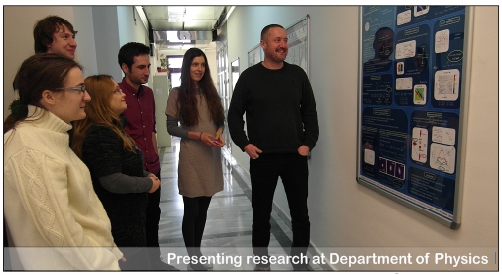Doktorski studij fizike je poslijediplomski sveučilišni studij čiji je nositelj Prirodoslovno-matematički fakultet (PMF) Sveučilišta u Zagrebu.
Izvoditelji studija: Fizički i Geofizički odsjeci PMF-a
Suradne ustanove: Institut Ruđer Bošković i Institut za fiziku, Zagreb
Normalno trajanje studija je tri godine i završava obranom doktorskog rada i promocijom u najviše akademsko zvanje doktora znanosti iz znanstvenog područja prirodnih znanosti, znanstvenog polja fizike ili geofizike.
Osmišljen je kao istraživački studij s manjim udjelom nastave, a sve u svrhu poticanja znanstvene izvrsnosti i kreativnosti.


 Pristupačnost
Pristupačnost